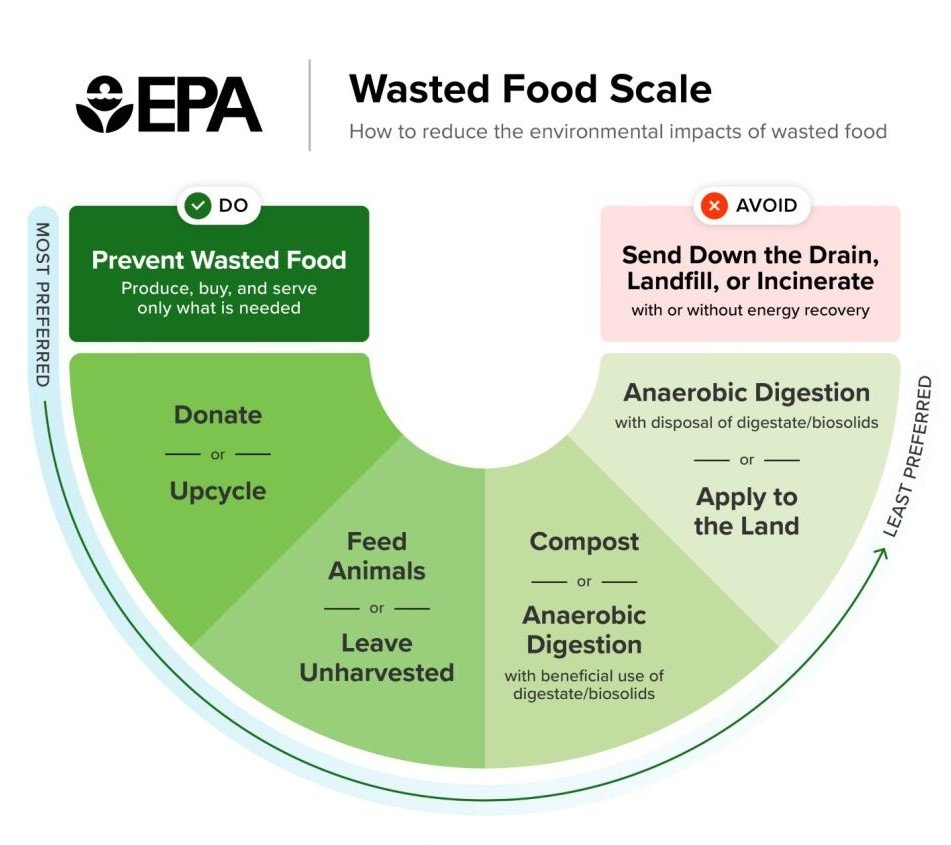Methane Reduction is Our Best Way to Have Immediate Climate Impact
Reducing methane was a key focus at COP28. Why is curbing methane such a big deal?
First, methane’s contribution to global warming is about 80 times an equivalent amount of carbon dioxide over a 20 year period. That means that reduction today is one of the easiest ways to have an immediate impact on global greenhouse gas emissions.
Second, when we’re talking about methane leaks from fossil fuel operations, leaking gas is lost money — so even oil and gas companies have an incentive to reduce these leaks.
There’s another major contributor to methane emissions: food waste. USDA research estimates that 30-40 percent of the food supply is wasted annually: in 2010 that was approximately 133 billion pounds of food waste including loss in the production supply chain and consumers. Food loss during production can occur from weather, insects or rodents, mold and bacteria. Spoilage at the retail level can occur from cold-storage equipment malfunction or over-ordering. Consumers can also contribute to food waste when they over-buy, resulting in food being discarded from spoilage or scraps thrown out because more was cooked than needed.
- Food that could have helped feed food-insecure families ends up in a landfill.
- Energy and labor that goes into producing and transporting food is wasted when that food is discarded.
Are we doing anything about all this waste?
The USDA and EPA have developed programs focused on food waste reduction and challenged companies and organization to commit to reduce food loss and waste in their operations. EPA’s Food Recovery Challenge provides resource to help participants improve their food management practices. Waste prevention is most preferred; however it may not be possible to prevent all agricultural waste and biomass, so recovering energy from this and other organic waste is preferred over sending to a landfill or incinerating without energy recovery (see chart below).
What is Anaerobic Digestion?
Anaerobic digestion is a natural process in which microorganisms break down organic materials such as food scraps, ‘green’ waste from landscape maintenance, and biosolids such as manure. This process produces biogas, which can be recovered and used as a renewable energy source. Biogas is primarily methane (CH4) and carbon dioxide (CO2), with very small amounts of water vapor and other gases. Communities and businesses can use biogas to:
- Power engines for heating, cooling, and electricity.
- Run alternative-fuel vehicles.
- Supply pipeline quality gas that is delivered to communities through the existing natural gas pipeline infrastructure.
How biogas is used depends on its quality; removing water vapor, carbon dioxide and other trace gases is required to meet pipeline quality standards, and to meet U.S. vehicle fuel standards. Lower quality biogas might typically be used onsite to power tougher internal combustion engines, making the facility energy self-sufficient.
Biogas that has been treated to meet pipeline quality standards can displace the use of natural gas from fossil fuels. Biogas can be cleaned and upgraded to produce compressed natural gas (CNG) or liquified natural gas (LNG). CNG and LNG can be used to fuel cars and trucks.
In addition to the biogas, anaerobic degestion produces materials than can be made into other products such as:
- Fertilizer for crops.
- Soil amendments.
- Bedding for livestock.
- Flower/plant containers.




 Carl Young, used under CC 4.0 License
Carl Young, used under CC 4.0 License
